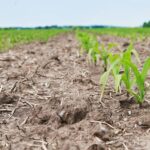Crop residue management plays a crucial role in sustainable agriculture. What farmers choose to do with the remains of their harvest—such as stalks, leaves, husks, and stubble—can significantly impact soil health, pest control, and overall productivity. Effective management not only enhances the next planting season but also protects the environment by reducing greenhouse gas emissions and preventing land degradation.
One of the best practices for managing crop residues is mulching. Instead of burning or removing crop remains, farmers can chop and spread them evenly across the field. This organic mulch acts as a protective layer, conserving soil moisture, regulating temperature, and suppressing weed growth. Over time, the residues decompose and improve soil structure and fertility.
Incorporating crop residues into the soil through ploughing or tilling is another effective method. This practice adds organic matter to the soil, enhances microbial activity, and boosts nutrient cycling. However, it’s important to avoid over-tilling, which can lead to soil erosion and compaction. Conservation tillage techniques—such as minimum tillage or strip-till—offer a balanced approach, preserving soil integrity while still managing residues efficiently.
Crop rotation and cover cropping can also support residue management. By rotating crops with legumes or cover crops like clover, farmers reduce pest buildup and improve soil health. The combination of crop residues from different plant types adds diverse nutrients to the soil and supports a richer microbial ecosystem.
Composting is a valuable practice for farmers with access to small-scale composting systems. Residues mixed with animal manure and other organic waste decompose into nutrient-rich compost, which can be returned to the fields. This closed-loop system not only recycles farm waste but also reduces the need for chemical fertilizers.
For regions where residue burning is still common, education and incentives can help shift farmers toward sustainable alternatives. Burning crop residues causes severe air pollution and loss of valuable soil nutrients. Encouraging farmers to adopt no-burn practices, supported by government policies and mechanized tools, can significantly improve air quality and soil health.
Using specialized equipment like happy seeders, straw choppers, and rotavators enables farmers to manage residues without removing them from the field. These machines chop and distribute the residue evenly, allowing seeds to be sown directly into the soil with minimal disturbance. This method not only saves time but also preserves soil moisture and reduces erosion.
Proper timing is essential for effective crop residue management. Managing residues soon after harvest ensures that decomposition begins early, minimizing pest and disease risks. Delaying residue management can result in hardened soil surfaces or increased weed competition, which may affect the next crop’s success.
Managing crop residues wisely is key to sustainable farming. Whether through mulching, composting, conservation tillage, or mechanized tools, these practices contribute to healthier soils, better yields, and a cleaner environment. By adopting these best practices, farmers not only improve their productivity but also play a role in preserving natural resources for future generations.







